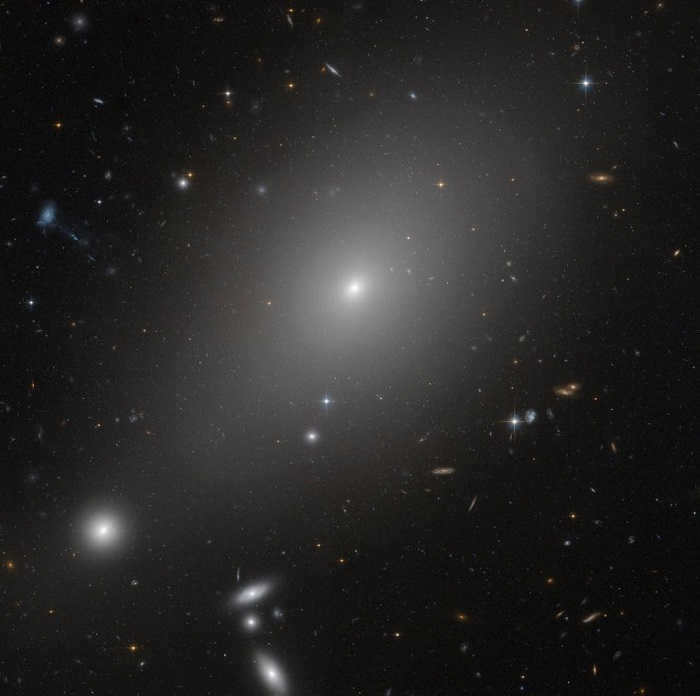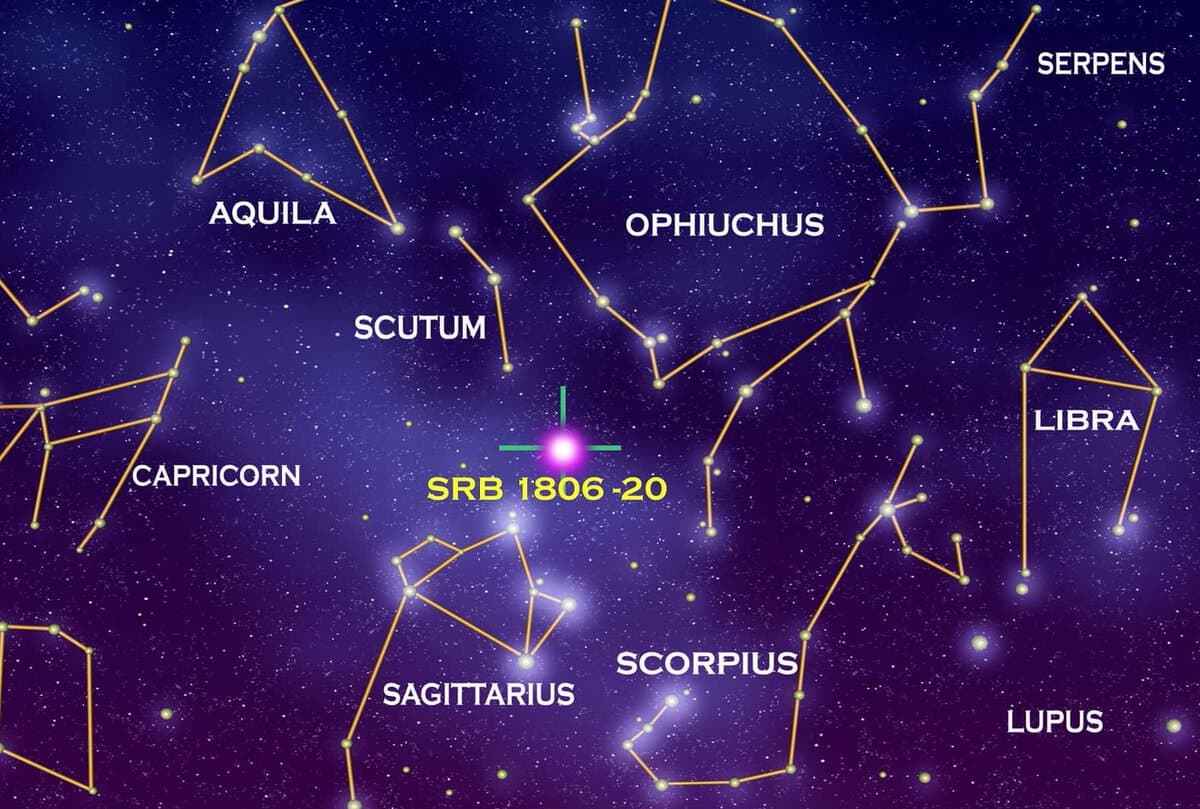

Presently, there are 58,744 educational establishments that are providing additional combined reductions (ranging from 2% to 25%). To ascertain which reduction is applicable to all staff members of your educational institution, kindly sign in to your personal Infoworks account.


Specialized course for career advancement
Utilizing library and bibliographic knowledge for effective teaching methods
In addition to this promotion, your educational institution may also offer a discount based on the number of colleagues who have completed Infowork courses.
Currently, 58,744 educational institutions are eligible for additional discounts ranging from 2% to 25%. To find out the discount available to all staff members at your educational institution, please log in to your personal Infoworks account.


Enroll in our professional retraining course now!
Discover the art of managing electronic service of archives, libraries, and information and library centers
We are pleased to offer an exclusive discount for your educational institution. The discount amount will depend on the number of your colleagues who have already completed our Infoworks courses.
Currently, a total of 58,744 educational institutions are benefiting from additional discounts ranging from 2% to 25%. To find out the specific discount available for all employees of your educational institution, simply log in to your personal Infoworks account.


Obsessive-Compulsive Spectrum Disorders: An Overview
Individual Slide Presentation Description:

On each slide, many of us have likely experienced a sense of regret while gazing at the countless stars in the night sky, realizing that we lack the basic knowledge of stargazing.
Exploring the constellations of our solar system
at MBOU “Multidisciplinary Lyceum № 11 named after V.G. Mendelson”.
Created by Egor Sukharev, a 3rd grade student in class “B”.
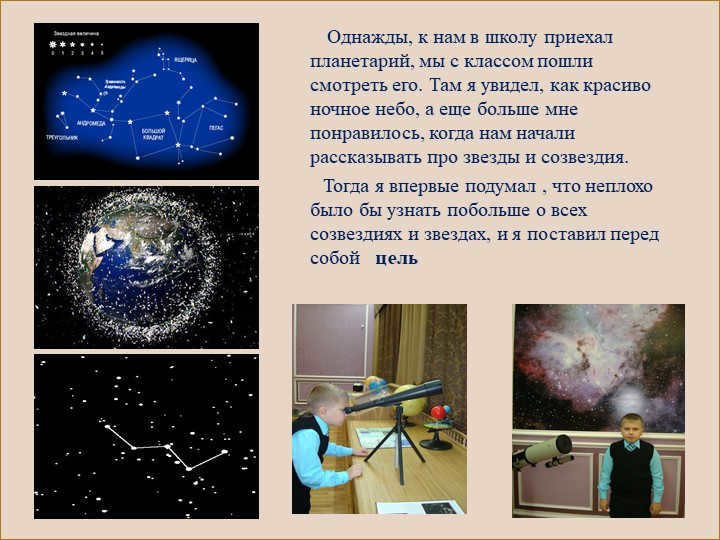
On another occasion, the planetarium paid a visit to our school, and our entire class had the opportunity to attend the presentation. It was a mesmerizing experience as we were transported into the wonders of the night sky. The beauty of the stars and constellations captivated me, and it sparked a desire within me to delve deeper into their mysteries. From that moment on, I knew that I wanted to learn more about every constellation and star, and I set a personal goal to achieve just that.

Slide 3 Goals:
1. To carry out a survey among children to determine their knowledge of constellations and stars.
2. To research information from various sources regarding the subject.
3. To understand the meaning of the term “Constellations”.
4. Identify the constellations visible in the night sky.
5. To create and propose a self-made game called “Starry Sky” for children.
6. To create a booklet for students titled “Constellations of the Solar System”.
Purpose: To explore the concept of constellations, the reasons behind stars being grouped into constellations, and the specific constellations visible in the night sky of our hemisphere.

Slide 4: Conducting a survey among students.
Slide 2: Analyzing relevant literature and visiting the “Meteorological Station of Simbirsk Planetarium.”
Slide 3: Implementing practical applications.

During the initial phase of my research, I conducted a survey to assess my classmates’ and fourth-graders’ knowledge on stars and constellations. I documented their responses in a young researcher’s diary, which helped me compile a set of questions to ask them.
Here are the key findings from the first stage of my research:
Out of the 50 students I interviewed:
- 1. “What is a constellation?”
- 10 students knew the answer.
- 40 students did not know.
- 2. “Why are stars grouped into constellations?”
- 5 students knew the answer.
- 45 students did not know.
- 3. “How many constellations are there?”
- 7 students knew the answer.
- 43 students did not know.


Slide 6 During the second stage of our work:
– I had the chance to explore the school library and the library dedicated to I.A. Goncharov;
– I also had the opportunity to visit the “Meteorological Station of Simbirsk. Planetarium” museum;
– Lastly, I had a discussion with the astronomy teacher at the lyceum.

Slide 7 Conclusion 1. The Sun is the most luminous star observable from every location on Earth. Constellations are clusters of stars. For instance, the celestial formation we observe in the sky is a constituent of a constellation known as the Big Dipper.
While perusing through books on space at the library, I sought information regarding the definition of a constellation.
Results obtained during the second phase of the investigation:
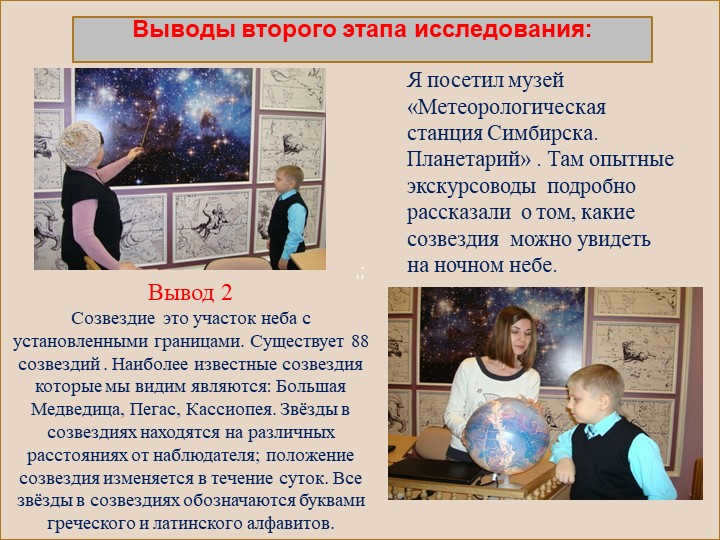
On the eighth slide, I had the opportunity to visit the museum called “Meteorological Station of Simbirsk. Planetarium”. During my visit, knowledgeable guides provided detailed information about the various constellations that can be observed in the night sky.
Conclusion 2
A constellation is a specific section of the sky that has defined boundaries. There are a total of 88 constellations. Some of the most well-known constellations include the Big Dipper, Pegasus, and Cassiopeia. Each constellation contains stars that are located at different distances from the observer, causing the position of the constellation to change throughout the day. Additionally, all stars within a constellation are identified by letters from the Greek and Latin alphabets.
These findings highlight the key points from the second stage of the research:


Slide 9: I reached out to my astronomy instructor, Kirillova M.M., for assistance. She educated me on the reasons why stars are arranged in constellations and how constellations aid in navigating the night sky.
Conclusion 3: In order to differentiate stars more effectively, ancient astronomers thousands of years ago organized stars into clusters resembling imaginary figures, such as a lion, a snake, scales, and other mythological creatures. These star clusters were referred to as constellations.
Conclusions from the second phase of the research:
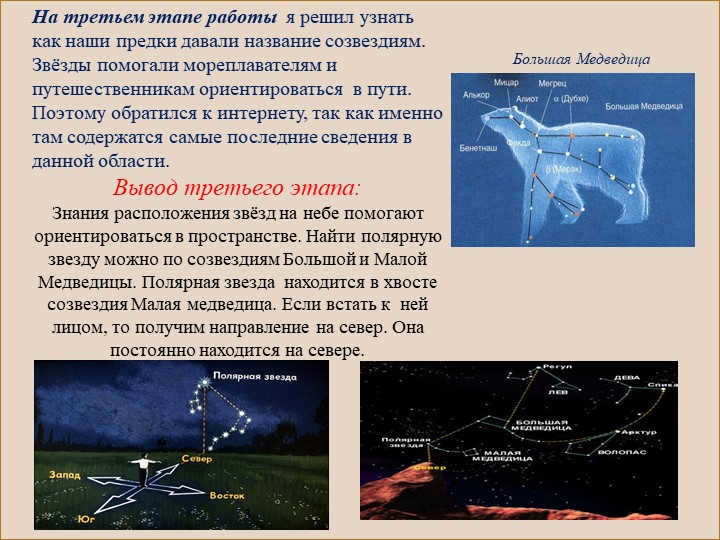


On slide 11, I wanted to find a way to show my classmates the beauty of constellations and individual prominent stars. However, since I don’t have much knowledge about astronomy, I devised a game that would not only introduce them to constellations but also teach them how to navigate using the stars. Here’s what I came up with.

During the 12th slide, I had the opportunity to present in front of my fellow classmates as well as students from other classes. I shared my knowledge about constellations and stars, and to make it more interactive, I distributed booklets to them as well.


1. I effectively achieved the primary objective of my investigation, specifically, to uncover explanations for the following questions:
– What exactly is a constellation?
– Why are stars organized into constellations?
– Which constellations are visible in the nighttime sky?
2. I have successfully completed all the tasks I set for myself.
3. I ascertained that the stars can be used for navigation from any location on Earth.
Results of the project
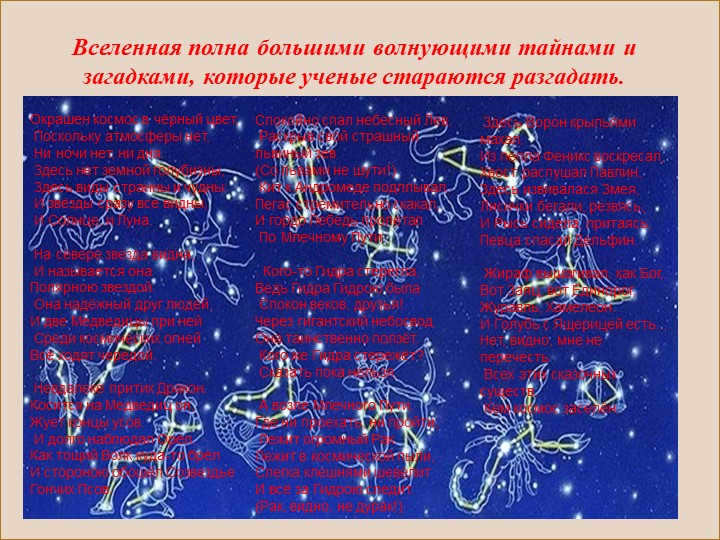

There are 14 slides dedicated to exploring the vast expanse of the Universe, which is teeming with fascinating mysteries and conundrums that scientists are tirelessly working to decipher.
The backdrop of space is a deep black hue, devoid of any atmosphere, rendering the concept of night and day irrelevant. The absence of earthly blue is compensated by the presence of awe-inspiring and otherworldly panoramas. The stars shine brilliantly, all visible at once, accompanied by the radiant presence of the sun and the moon.
One particular star, known as Polaris, holds a special place in the northern hemisphere. It serves as a guiding light for people, and it is accompanied by the constellation Ursa Major and Ursa Minor, also known as the Big and Little Dipper, respectively. Together, they form a mesmerizing sight amidst the cosmic splendor.
The Dragon is calm in the distance.
He is observing the Bears,
Gnawing on the tips of his mustache.
And for a prolonged period of time, the Eagle observed
How the skinny Wolf walked away
And he avoided the constellation of the Hound Dogs.
Where the Raven flapped its wings,
The Phoenix emerged from the ashes,
Where the Peacock fluttered its feathers,
Here the Snake slithered and the Foxes scurried,
And the lynx hid, lurking,
And the Dolphin rescued the vocalist.
Hydra was protecting someone,
Because Hydra was Hydra
For eternity, my friends!
Across the vast sky
She slithers mysteriously
Who is Hydra protecting?
We still can’t tell.
But near the Milky Way
Where passage is forbidden
There resides a massive Cancer
Resting in the cosmic dust
And he flexes his claws subtly
And he’s observing Hydra.
(Cancer is not foolish!)
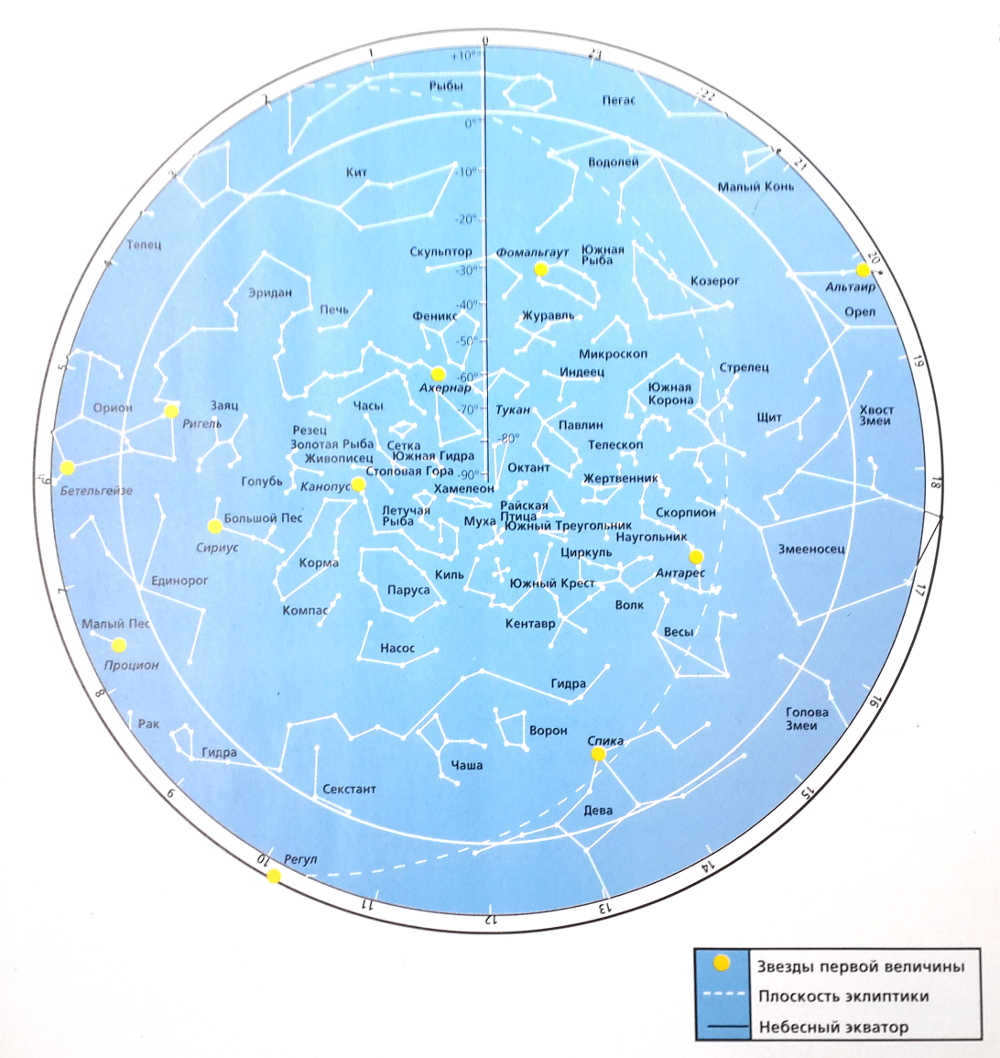 Map of the Starry Skies in the Southern Hemisphere
Map of the Starry Skies in the Southern Hemisphere
If you have spent your entire life in the Northern Hemisphere and suddenly find yourself on the opposite side of the equator, like in Australia, South Africa, or New Zealand, the night sky above you on a clear evening will appear unfamiliar and even peculiar. Upon closer inspection, you will realize that it is due to a completely different arrangement of celestial bodies in the sky. Nevertheless, these stars form recognizable constellations, serving as reliable landmarks for travelers and sailors.
The constellations of the Southern Hemisphere were named much later than the Big Dipper or Orion. The ancient Greeks, who organized most of the well-known star formations, did not venture across the equator. Instead, European sailors in the 17th and 18th centuries took on the task of naming these constellations as they sailed to India and South America.
Name of constellations
In total, there are 88 constellations in the celestial sphere that are visible from Earth (all of them were officially approved by the International Astronomical Union in 1930); 40 of these constellations are visible in the Southern Hemisphere. Some of these constellations have names that originated from Greek mythology, such as Centaurus, Phoenix, and Scorpio. Other names were derived from scientific and nautical terminology or simply from everyday life – for instance, Microscope, Furnace, Grid, and Octant.
Southern Subpolar Zone
Similar to the Northern Hemisphere, the stars in the southern sky also exhibit slow movement throughout the night due to the Earth’s rotation on its axis. However, unlike the convenient reference point of Polaris in the North, there is no such easily identifiable marker in the South. Instead, the imaginary point representing the South Pole is located in the constellation Octanthus.
The South Circumpolar Zone refers to the area of the sky within 40 degrees of the South Pole. Stars in this region never disappear from the horizon, regardless of the time of night or year. (In fact, they remain in the sky during the day, but their brightness is naturally overshadowed by the radiance of the Sun. In regions near the equator, these stars rise in the east and slowly move westward throughout the night.)
Constellations located entirely within the Southern Subpolar Zone include the Southern Cross, Chameleon, Fly, the Southern Triangle, Peacock, Clock, The Flying Fish, and others.
Close to the horizon
Many constellations in the Southern Hemisphere only appear in the sky during specific times of the year, similar to those in the Northern Hemisphere. This occurrence is a result of the Earth’s axis tilt and its orbit around the Sun. For instance, Kiel and the Bowl are most visible during the spring when they rise above the horizon. Libra and the Southern Cross are prominent in the summer, while the constellations of Phoenix and Capricorn are seen in the fall, and Eridanus and Keith in the winter.
This cycle not only allows us to determine the specific season or time of day, but it also greatly assists astronomers. As stars shift in the sky, they can align themselves in a more optimal position for observation. Conversely, they can also move out of the field of view of telescopes, thus making way for other parts of the celestial sphere to be observed.
Galaxies and Nebulae
One of the most breathtaking sights in a clear night sky is a unique band of translucent light stretching diagonally across the sky. This is known as the Milky Way – our very own galaxy, a collection of innumerable stars whose light takes tens of thousands, or even millions of years to reach us. Despite its spiral disk shape (with our Solar System located at the tip of one of its arms), to us it appears as a strip due to our perspective. The Milky Way can be observed with equal clarity in both the northern and southern hemispheres, but its most radiant section is found within the southern constellation of Sagittarius..

This entry was published in the field of Science. Save this link for future reference.
The celestial dome is a familiar sight to all. Countless stars, seemingly infinite in number, adorn the firmament, along with the enigmatic moon and indiscernible nebulae. The allure of the starry sky is undeniable, captivating and enthralling all who gaze upon it. Within this vast expanse, one can find a myriad of celestial wonders – nebulae, stars, constellations, planets, and galaxies. Since ancient times, observers of the night sky have noticed that the stars follow a certain order, exhibiting a remarkable arrangement that can be organized into constellations.
The constellations that make up the zodiac have the most ancient names. The term “zodiac” comes from the Greek word meaning “circle of animals”. Throughout the year, the Sun travels through each of the zodiac constellations for about a month, making a total of twelve constellations. The ancient Greeks gave names to these zodiac constellations: Pisces, Aries, Taurus, Gemini, Cancer, Leo, Virgo, Libra, Scorpio, Sagittarius, Capricorn, Aquarius. One of the most well-known constellations is the Big Dipper, which doesn’t actually resemble a bear but rather a ladle with a long handle. According to ancient Greek mythology, the god Zeus fell in love with the nymph Callisto, and his jealous wife Hera transformed her into a bear. Zeus then placed her in the sky as a constellation.
In Russia, the constellation was known as Voz, Pot, and Ladle, while the Ukrainians referred to it as Telega.
Adjacent to the Big Dipper is the Little Dipper constellation, which also has a ladle-like shape, but smaller in size. At the very tip of the handle of the “bucket” shines Polaris.
The Milky Way is a celestial band that encircles the sky. The ancient Eskimos believed it to be a snow-covered road, the nomads of the East saw it as a path strewn with straw, and the Greeks considered it the pathway of the gods. In reality, the Milky Way is comprised of millions of stars that form our galaxy. The term “galaxy” itself is derived from the Greek word for “milky.” Astronomer William Herschel demonstrated that the Milky Way consists of star clusters.
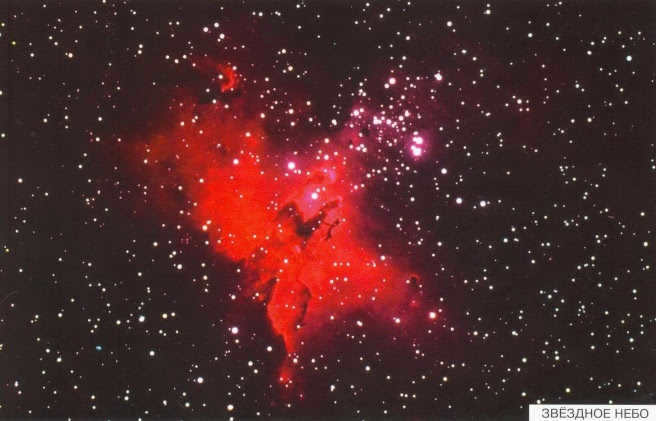
A COMET
With its fiery tail spread out,
A comet streaks through the stars.
– Hear, constellations,
♪ Amazing tidings ♪
♪ Celestial news ♪
journeying at incredible speeds,
And novel satellites of the Earth.
♪ I was soaring away from the Earth ♪
The ships pursued me!
(G. Sapgir)
Comets are deemed the most enigmatic entities in the cosmos. Tailed stars that appeared suddenly in the nocturnal heavens, terrified ancient civilizations. Comets were believed to be messengers of doom. Whenever another comet approached the Sun, unimaginable calamities, pandemics, and bloody conflicts were anticipated.
Scientists have determined that comets are ordinary celestial bodies, consisting of large blocks of stone covered with a thick layer of ice. As the comet approaches the Sun, the temperature increases, causing the ice to evaporate. This process creates a massive tail that can stretch for millions of kilometers.
One of the most well-known comets is Halley’s Comet, which orbits the Sun every 76 years. The last time it was visible in Earth’s sky was in 1986, marking its thirtieth recorded visit in human history. Historical records of Halley’s Comet stretch back centuries, with reports of it occasionally coming so close to Earth that it was visible during daylight hours, causing fear and confusion.
Contemporary astronomers investigate comets by means of automated probes. In 1986, spacecraft were dispatched to explore Halley’s Comet. During their approach, they transmitted visual representations of the celestial object back to Earth.
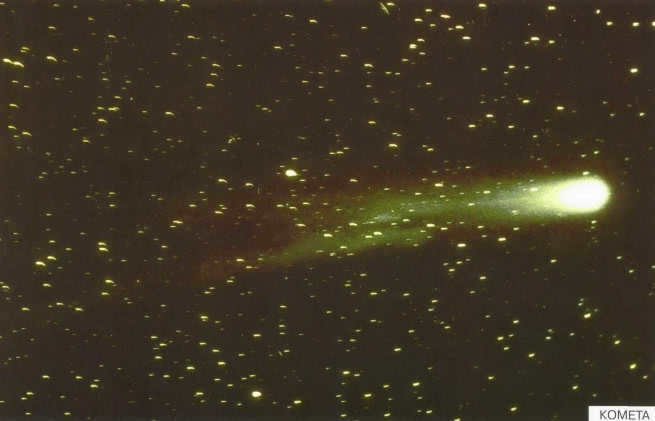
THE TELESCOPE IN SPACE
Astronomers have always had a desire to observe the stars under optimal conditions. They have ventured to high mountaintops, where the air is cleaner, and constructed large telescopes to discern faint stars. However, the ultimate location for studying the celestial sky is in space, where there is no atmosphere. In 1990, the Hubble Space Telescope was launched into Earth’s orbit. This telescope had a weight of 12 tons and a mirror diameter of 2.5 meters.
By utilizing the space telescope, astronomers were able to capture photographs of exceptional resolution that were unattainable with terrestrial telescopes. The Hubble telescope possesses a “visual acuity” so remarkable that it can discern a small fly from a distance of 10 kilometers. This space telescope has played a pivotal role in the discovery of countless new stars, galaxies, and nebulae. It marked the first time that the surface of the colossal star Betelgeuse in the Orion constellation was photographed.
The observations made by this telescope truly surpassed all expectations. It peered into the depths of the universe, revealing stars situated billions of light years away from our vantage point.
This would undoubtedly be a tremendous achievement:
Marveling at the arrangement of stars in the constellation Lyra,
And crafting a manuscript, without exception.
“Delve into the depths of the cosmos!”
Presently, there exist numerous specialized telescopes in Earth’s orbit, each dedicated to observing celestial objects within a specific range of wavelengths: “Copernicus,” “Astron,” “Uhuru,” “Einstein,” and numerous others.
In July 1999, the Chandra X-ray telescope was launched into space aboard the space shuttle Columbia. Its purpose was to investigate cosmic radiation and enigmatic black holes.
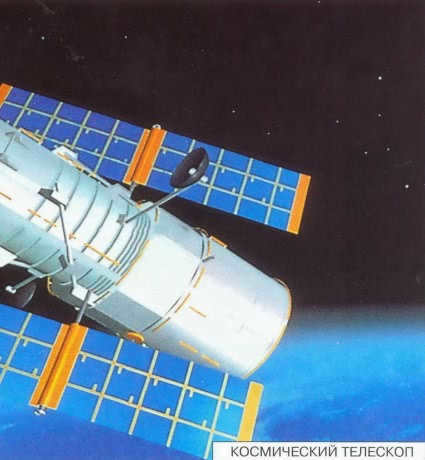
THE MOON
A loyal companion, a shining gem in the dark,
An additional source of light.
We must admit, however:
The Earth would be dull without the presence of the Moon!
(R. Aldonina)
The Moon is a natural satellite of the Earth. It illuminates the night sky with its bright glow. It can be easily observed even without the aid of telescopes, and with small binoculars, one can even spot the dark patches on its surface known as seas.
Galileo was the first to discover mountains and plains on the Moon. He observed that the seas are smooth areas with a darker shade compared to the rest of the surface, which he referred to as continents. These continents are covered in craters caused by the impact of meteorites.
Astronomers have assigned names to various lunar features such as ridges and mountain ranges. Similar to on Earth, these features have been named after famous locations like the Apennines, Caucasus, and Alps. Additionally, certain areas on the Moon have been designated with names like the Ocean of Storms, Sea of Crises, Sea of Tranquility, and Sea of Rains. Craters on the Moon have been named after notable Earth scientists such as Copernicus, Kepler, and Tycho Brahe. Notably, objects on the lunar far side, which have been photographed by space probes, have been named after modern scientists and astronauts.
The Moon lacks both water and an atmosphere. Temperatures on the lunar surface can reach up to +120 degrees during the day and drop to a frigid -170 degrees at night.
The Moon appears to shine because it reflects sunlight. From Earth, we observe the Moon as a round object or sometimes as a crescent shape, and there are times when it is not visible at all. We can only see the portion of the Moon that is illuminated by the Sun’s rays.
What is the origin of the Moon? There are three theories explaining how our satellite came to be. In the 1800s, astronomer George Darwin proposed the idea that the Moon and Earth were initially a single molten mass that later split into two separate bodies.
Another hypothesis suggests that the Moon was originally an asteroid that got caught in the Earth’s gravitational pull and became its satellite. In the mid-20th century, Russian scientists led by O. Yu. Schmidt developed a hypothesis proposing that the Moon and Earth formed from a cloud of tiny particles.
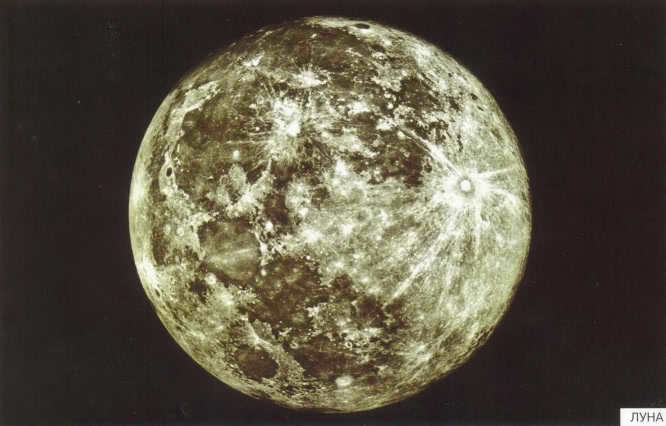
EXPLORING THE MOON
In 1958, the first spacecraft from Earth, the Soviet probe Luna-I, embarked on a journey to the Moon. It flew within a distance of 6 thousand kilometers from the lunar surface. In September of that same year, “Luna-2” successfully made a hard landing on the Moon.
Following this, “Luna-17” and “Luna-21” successfully delivered lunar rovers, known as “lunokhods”, to the Moon’s surface. These rovers were remotely controlled from Earth via radio signals. “Lunokhod-1” operated for 11 lunar days (equivalent to 10.5 Earth months) and traveled approximately 10 kilometers on the Moon’s surface. On the other hand, “Lunokhod-2” covered a distance of about 37 kilometers during its 5-month mission. These “moon rovers” captured images of the lunar surface, collected soil samples, and conducted studies on its chemical composition.
Undoubtedly, the presence of autonomous vehicles on the lunar surface is a remarkable accomplishment in the field of science. However, humans desired an even greater feat – to step foot on the Earth’s satellite. In 1962, the United States initiated preparations for a manned mission to the Moon. American engineers meticulously devised the optimal trajectory for the spacecraft, ensuring it would orbit the Moon before returning safely to Earth. On December 24, 1968, the Apollo 8 spacecraft, commanded by Frank Borman, successfully entered the Moon’s orbit and completed ten orbits around it.
During the momentous month of July 1969, a Saturn 5 rocket was launched from the Cape Canaveral Space Center, propelling humanity closer to their ultimate goal.
The spacecraft that launched Apollo 11 into Earth orbit was commanded by Neil Armstrong. On July 19, Apollo 11 entered lunar orbit. Armstrong and Aldrin, the astronauts, boarded the Eagle lunar module and began their descent. At 2100 GMT, they successfully landed in the Sea of Tranquility and set foot on the Moon’s surface. This journey marked the furthest distance traveled by a human in space.
The moon people are observing, keeping their eyes wide open,
It’s a breathtaking sunrise and sunset!
A total of 12 astronauts, in six separate missions, had the opportunity to visit the Moon. They brought back over 300 kilograms of lunar rock for further study on Earth. In the later expeditions, the astronauts were able to explore the Moon using four-wheeled electric vehicles. Apollo 17 was the final manned mission to land on the Moon.
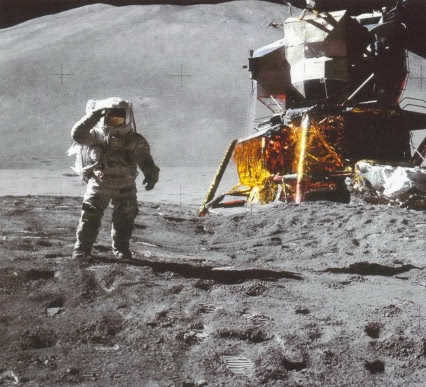
MARS
And in the shadows,
Glowing with violet light,
Mars is the fourth planet in our solar system. Science fiction authors hypothesized that Mars was inhabited by intelligent beings – Martians.
In the late 1800s, Italian astronomer Schiaparelli observed long, straight features on Mars,
which he referred to as canals. American astronomer Percival Lovell proposed that the Martians were experiencing a recurring drought and had constructed canals from the poles to the equator. It wasn’t until many years later, with the development of powerful telescopes, that scientists determined that the canals were actually chains of craters or tall mountains that appeared as straight lines from a distance.
With the advent of space travel, Mars started to be explored by automated probes. In 1962, Mars-1, a Soviet station, flew by the planet at a distance of 197,000 kilometers. Then, in July 1965, the American spacecraft Mariner-4 passed close to Mars and sent back the first-ever images of its surface.
In 1976, the Viking landers touched down on Mars and made the groundbreaking discovery of a desolate and frigid world.
Mars boasts the tallest mountains in the entire solar system. The extinct volcano Olympus Mons stands at an impressive height of 27 kilometers, making it three times taller than Mount Everest!
According to geologists, Mars was once abundant in water. Spacecraft images depict extensive, meandering valleys that resemble desiccated river channels. These formations span tens and hundreds of kilometers in length. Presently, scientists maintain that intelligent life does not inhabit Mars, although the existence of basic organisms cannot be ruled out. Although space probes have yet to validate this claim, they have also not disproven it.
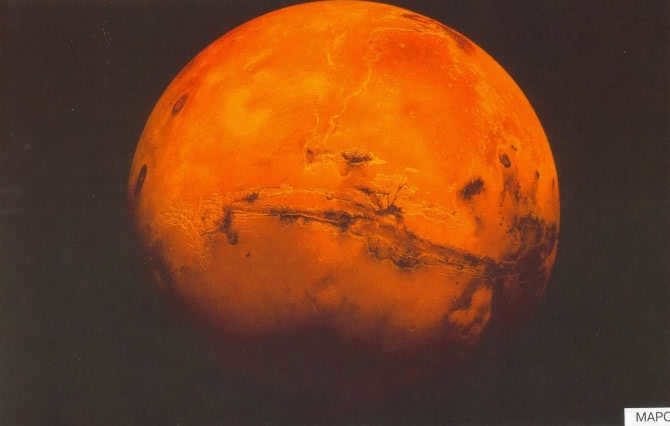
SPACE STATION IN ORBIT
This is the appearance of the International Space Station (ISS) as it revolves around the Earth. It is in a constant state of rotation, with international crews of astronauts working on it every 2-3 months.
The twentieth century, reaching for the stars,
Delivers a solemn message to us all:
There exists a profession of a cosmonaut,
Such a position already exists in the world.
The first long-term station to operate in orbit was our “Salyut”. It was launched into space in 1971. The station was divided into various compartments, including those for work, sleep, and instruments. Salyut had all the necessities for astronauts during a long flight, including an exercise bike and a treadmill.
The initial station operated for a period of three years. Following this, subsequent, more advanced stations were launched into Earth’s orbit.
Between 1986 and 2001, the Mir station orbited the Earth. It served as a comprehensive scientific complex. The Mir station boasted its own metalworking facility, astronomical observatory, and even a greenhouse. It was the first station to be visited by both Soviet Soyuz spacecraft and American reusable spacecraft. Over the course of its 15-year lifespan, more than 100 individuals from various nationalities paid a visit. The Mir station set a new record for the longest duration in space. Russian cosmonaut Valery Polyakov spent 14 months aboard the station from January 1994 to March 1995.
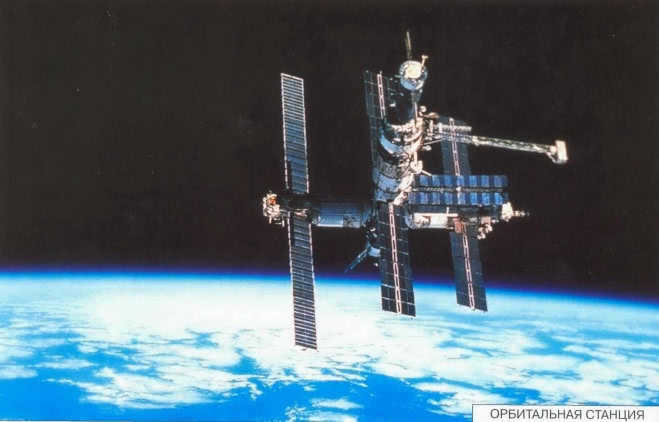
THE EARTH
In the green grass, you can find beautiful lily of the valley,
and dragonflies can be spotted in this area
When you look at the river, you will be amazed…
(Ya. Akim)
The Solar System consists of various planets, with the Earth being the most captivating and enchanting. From the perspective of space, our planet appears as a mesmerizing “blue planet”.
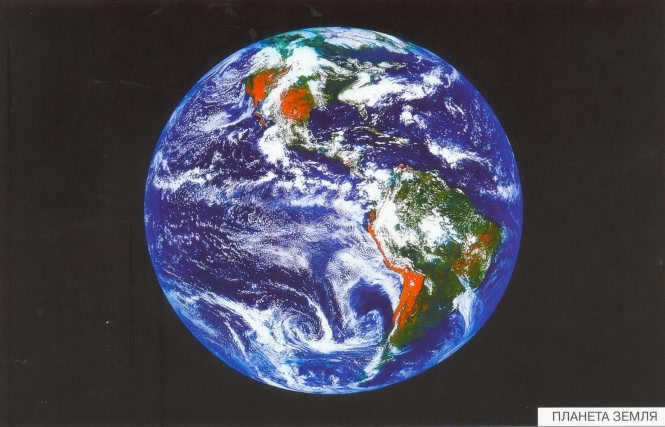
The existence of life is unique to Earth within the solar system. Earth, along with the other planets, formed approximately 4.5 billion years ago. The presence of a dense atmosphere with oxygen is what makes life possible on our planet. This atmosphere was created through volcanic eruptions that occurred billions of years ago.
Without an atmosphere, the temperature on Earth would vary greatly, ranging from +160 to -100 degrees Celsius in different areas. Such extreme fluctuations would make it impossible for any living organism to survive.
Earth experiences a diverse range of climates, with hot and humid rainforests near the equator and extremely cold temperatures near the poles.
The majority of our planet (75%) is covered by seas and oceans, making it more appropriate to refer to it as the Ocean Planet. The Mariana Trench is the deepest point in the world’s ocean, reaching a depth of over 11 kilometers. On the other hand, Mount Everest, located in the Himalayas, is the highest mountain, standing just under 9 kilometers tall. In our nation, the highest mountain is Elbrus, situated in the North Caucasus. . . ' "
Located at the center of the Earth is a solid metallic core. Above this core lies a layer of molten rock known as the mantle. The Earth’s surface is composed of the Earth’s crust, which varies in thickness ranging from 6 to 40 kilometers. This crust is comprised of tectonic plates that are in constant motion over the upper mantle. Plate boundaries are often the sites of earthquakes and volcanic eruptions. In the early stages of Earth’s formation, when the planet had not yet cooled sufficiently, numerous volcanoes erupted and the layers of the Earth were continuously shifting. Nowadays, volcanic eruptions and earthquakes occur with less frequency.
Each celestial body possesses its own unique characteristics,
which distinguish it from the others.
Saturn is easily identifiable due to its distinctive appearance.
It is encircled by a large ring system.
This ring system is not solid but is composed of various bands.
Scientists have unraveled the mystery:
Long ago, water froze in this region,
And Saturn’s rings consist of snow and ice.
(R. Aldonina)
Saturn is instantly recognizable by its prominent, expansive rings. It is the second largest planet, with a diameter of 120 thousand kilometers. Saturn completes its orbit around the Sun in 29 years.
Saturn has been observed since ancient times, it is the most distant planet in the solar system that can be observed with the naked eye. The first person to train a telescope on Saturn was Galileo Galilei. However, his telescope was not powerful enough to provide a clear view of the rings. Galileo Galilei could only see the planet’s disk, with two smaller disks on either side, giving the planet the appearance of having large ears. Galileo mistakenly believed these were Saturn’s moons. It wasn’t until 1655 that Christian Huygens, using a more advanced telescope, correctly identified Saturn’s rings.
Astronomers theorized that Saturn’s rings were formed from the remnants of a shattered moon
Similar to Jupiter, Saturn is predominantly made up of gas. However, due to its lower temperature, Saturn’s atmosphere appears less bright compared to its neighboring giant planet. Saturn boasts the most powerful winds in the entire solar system, with speeds reaching nearly two thousand kilometers per hour.
Among Saturn’s numerous satellites, the largest one is Titan, ranking as the second largest satellite in our solar system. Titan is encompassed by a dense atmosphere comprised of nitrogen and hydrocarbons. Notably, Titan’s surface is home to oceans filled with liquid methane. Scientists speculate that Titan may harbor the simplest forms of life. In 2005, the Cassini space probe conducted an exploration of Titan, dropping a descent vehicle onto its surface, which relayed images of the remote planet back to Earth.
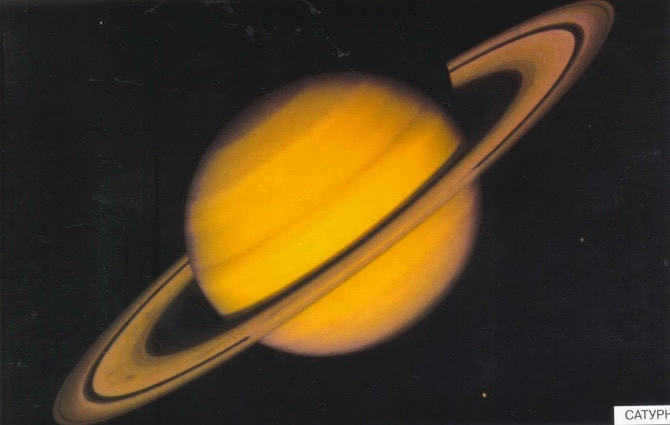
SUN
Sun-bear, emerge from the rear of the cloud,
# Perch on a tree stump and stroll all day long #
The Sun is the nearest star to Earth, yet it is still distant enough that even light traveling at a speed of 300,000 kilometers per second takes 8 minutes to reach us from the Sun. The distance from Earth to the Sun is 150 million kilometers.
Without the Sun, life on Earth would be nonexistent. Every occurrence on our planet is tied to the Sun: the transition from day to night, the arrival of winter or summer.
Over two thousand years ago, people began their exploration of the Sun. The Chinese were the first to observe peculiar dark spots on the surface of the star. The phrase “there are spots on the Sun” became a proverb, indicating that perfection does not exist in the world.
Observing the Sun through a telescope is not safe as it can cause blindness due to the intense brightness. To reduce the Sun’s radiance, astronomers utilize specialized dark glass filters. Interestingly, when a sunbeam is passed through a prism, it separates into the seven colors of the rainbow: red, orange, yellow, green, blue, indigo, and violet. Surprisingly, the white light we perceive is actually a combination of these colors.
By employing a spectrograph instrument, scientists have been able to determine the temperature, pressure, and chemical composition of the Sun’s interior. The Sun is composed of glowing gases, with its surface reaching a temperature of 6,000 degrees Celsius. The temperature within the Sun’s core reaches a staggering 15 million degrees.
Flares and explosions, including flares-protuberances, are frequently observed on the Sun’s surface.
When the Moon orbits around our planet, there are instances when it aligns perfectly between the Earth and the Sun, resulting in a solar eclipse. This phenomenon allows us to witness the solar corona and prominent features during a total eclipse.
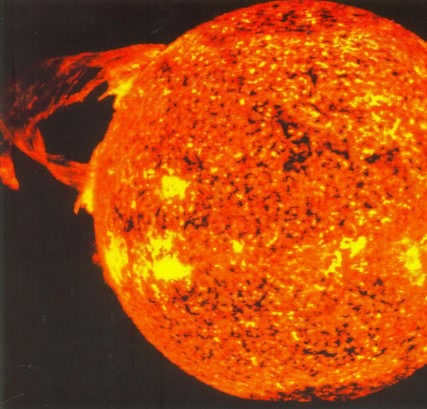
THE LAUNCH OF THE SPACESHIP
And embark on a journey towards the Sun.
♪ And not just for amusement ♪
And make their way back home.
(S. Baruzdin)
In order to explore the constellations and planets, as well as observe the Earth from outer space, mankind has developed
spaceships. These spacecrafts are sent far away from Earth for various scientific purposes.
A space rocket is a complex structure that involves the expertise of professionals from various fields. Some are responsible for the engines, others construct the framework of the spacecraft, while others handle the scientific instruments.
In 1981, the first flight of the American reusable spacecraft, the shuttle Columbia, took place. The shuttle had a resemblance to a large airplane with wings and a tail. During orbit, the shuttle was guided by two rocket boosters. Once the fuel was depleted, the boosters separated from the spacecraft at a high altitude and safely descended into the ocean with the help of parachutes. They were then recovered and sent to the factory for refueling.
The shuttle had a landing procedure similar to that of a regular airplane. It required a long landing strip made of durable concrete slabs.
The chief designer informed me:
– The takeoff might not be completely smooth….
That will be fine!
Rockets are launched into orbit from specialized launch sites called cosmodromes. There are now numerous cosmodromes worldwide, with almost every country having its own, some of which are even floating cosmodromes.
Baikonur, situated in the Kazakh steppes, is the most renowned cosmodrome in Russia. Presently, it falls under the jurisdiction of the Republic of Kazakhstan, although there are still Russian nationals employed to ensure the upkeep of the cosmodrome.

JUPITER
All the planets in sequence
Known as Pluto.
(A. Hite)
Jupiter is the largest planet in the solar system. The diameter of Jupiter is 11 times greater than that of our planet. Jupiter orbits the Sun in 12 years.
Jupiter has been recognized since ancient times for its significant brightness. The ancient Greeks named it after their supreme god, Zeus (Jupiter in Roman mythology), who ruled the sky.
For a long time, Jupiter was regarded as a star. In 1610, Galileo Galilei, the renowned astronomer of the Middle Ages, meticulously observed Jupiter through a telescope and concluded that it was not a star but a planet. Galileo Galilei noticed that Jupiter was not perfectly spherical.
However, the planet is flattened at its poles. Additionally, Galileo’s satellites were discovered by the scientist. Furthermore, during the 17th century, the English astronomer Cook observed spots on the surface of the planet, while the Italian Cassini discovered the Great Red Spot in the southern hemisphere. Nevertheless, the nature of this enigmatic formation remained unexplained.
Currently, scientists are observing Jupiter through telescopes from our planet. Additionally, they are also sending spacecraft to explore the largest planet in our solar system. Through these studies, it has been determined that the internal makeup of Jupiter varies greatly from that of Earth. The visible outer layer of Jupiter is actually comprised of clouds consisting of methane and ammonia. Deep within the planet, there exists a small, solid core. The spots that can be seen on the surface of Jupiter are actually atmospheric cyclones and vortices. Among these atmospheric phenomena, the Great Red Spot stands out as the most powerful hurricane in our entire solar system. This colossal storm has been raging for over 300 years and has undergone various changes in color, ranging from darker to lighter hues. The Great Red Spot is so enormous that it could easily contain our entire Earth within its boundaries.
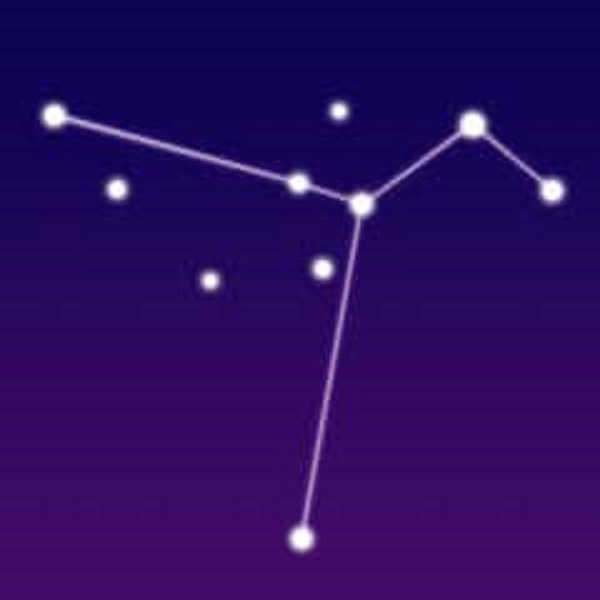
Columba is a constellation located in the southern sky. It is known as the Dove in Latin. However, it is often referred to as Columba Noachi, which means Noah’s Dove. This name is derived from the biblical story of Noah, where a dove brings him the news that the Great Flood is subsiding.
The constellation Dove was originally named by Peter Plancius, a Dutch astronomer, in the late 16th century. It was later included in Johann Bayer’s Uranometria in 1603. Columba is home to several notable celestial objects, including the famous runaway star Mu Dove, the spiral barred galaxy NGC 1808, and the globular cluster NGC 1851.
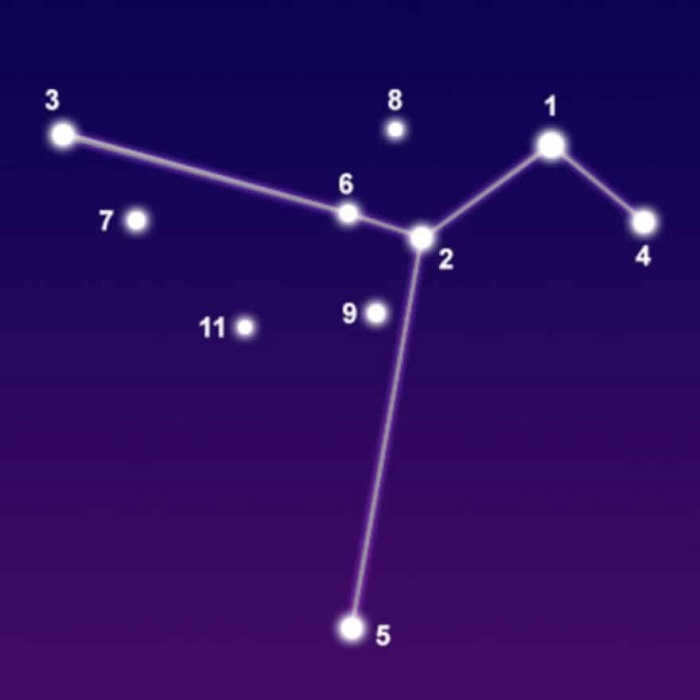
Information, placement, and diagram
The constellation Dove is ranked 54th in terms of size, covering an area of 270 square degrees. It is situated in the southern hemisphere’s first quadrant (SQ1) and can be observed between +45° and -90° latitude. It borders the constellations Corma, Painter, Hare, Great Dog, and Cutter. Dove is only visible in the southern sky, below the constellations Big Dog and Hare.
| Columba | |
| Col | |
| White Pigeon | |
| 5 h 00 m to 6 h 35 m | |
| -43° 00' to -27° 15' | |
| 270 square degrees (54th position) | |
| Fact (α Col) – 2.65m | |
| absent | |
| Canis Major, Lepus, Orion, Taurus, Puppis | |
| This constellation can be seen at latitudes ranging from +47° to -90°. The optimal time for observation is December and January. | |
There are no stars that are brighter than magnitude 3.00 and are located within a distance of 32.6 light-years (10 parsecs). The star with the highest brightness is Alpha Dove (Fact). The closest star is Gliese 218, which is 48.89 light-years away. There is a star called WASP-63 (G8) that has a planet that passes in front of it. There are no Messier objects or meteor streams in this constellation. Take a look at a star map to see a diagram of the Dove constellation.
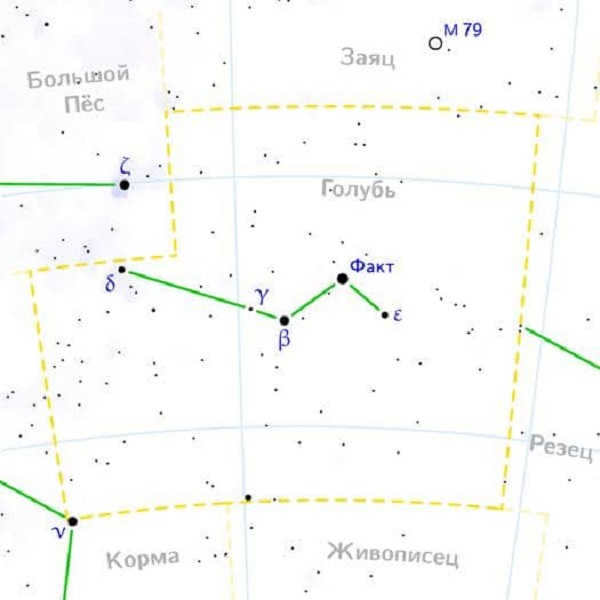
The Celestial Waters constellation group includes Sails, Compass, Stern, South Fish, Eridanus, Little Horse, Dolphin, Kiel, and Noah’s Ark.
Myth
Noah’s Ark is represented by the dove, which was created by Peter Plancius using stars from the constellation The Ship of Argo. Plancius renamed it in 1613.
According to the legend, Noah released a dove from the ark to find dry land after the Great Flood. The dove returned with an olive branch in its beak, indicating that the flood was receding. In some versions, the dove also symbolizes the Argonauts, who released it to safely navigate between rocks.
Let’s discover the stars of the Dove constellation, accompanied by detailed descriptions and characterizations.
The primary star (Alpha Dove) is a binary star system consisting of a subgiant of the Be spectral type (similar to the variable star Gamma Cassiopeia) with an apparent magnitude ranging from 2.62 to 2.66, and a dim companion with an apparent magnitude of 12.3. The primary star is surrounded by an expanding shell of gas.
Alpha Dove is the brightest star in the constellation and belongs to the B7IVe spectral class. Its name is derived from the Arabic word Al-Fahita, meaning “dove” or “dove of the ring”. It has an apparent visual magnitude of 2.60 and is located approximately 270 light years away.
Wesen (Beta Dove) is a massive orange star classified as K1IIICN + 1. Its name is derived from the Arabic term for “mass”. It is the second brightest star, with an apparent visual magnitude of 3.12, and is situated 86 light-years away.
Delta Dove is a binary star system consisting of a yellow giant of spectral class G7 III. It is located 237 light years away and has an apparent magnitude of 3.853. The name is derived from the Arabic phrase al-ghuşn al-zaitūn, which means “olive branch”. The giant star has a close companion with an orbital period of 2.38 years.
Γ Dove (Gamma Dove) is a blue subgiant (B2.5 IV) with an apparent visual magnitude of 4.35. It is located approximately 854 light-years from the solar system.
Mu Dove is a star that is believed to have been expelled from the Iota system in the Trapezoidal Cluster of the Orion constellation. It is known for its rapid rotation, completing a full rotation every 1.5 days. Mu Dove belongs to the O9.5 V spectral class and is one of the few O-class stars that can be seen without the aid of a telescope. It is situated approximately 1,300 light years away from Earth and has an apparent magnitude of 5.15.
Epsilon Dove, on the other hand, is a giant star classified as K1 IIIa. It is located 531 light years away from us and has an apparent magnitude of 3.875.
Lastly, there is another star called Dove, which is a yellow-orange giant (K0 III) situated 531.2 light years from our planet. It has an apparent magnitude of 3.946.
Celestial objects
NGC 1808 is a galaxy of the Seyfert type that is located 40 million light-years away. It has an apparent magnitude of 10.8 and measures 6’5″ × 3’9″. This spiral galaxy features a junction and bears a striking resemblance to our very own Milky Way. One of its most intriguing features is its unusual core, which takes the shape of a deformed disk and exhibits peculiar streams of hydrogen gas emanating from its central regions. Scientists believe that this galaxy is experiencing a high level of star formation activity. Notably, the supernova SN 1993af was observed in NGC 1808 in 1993.
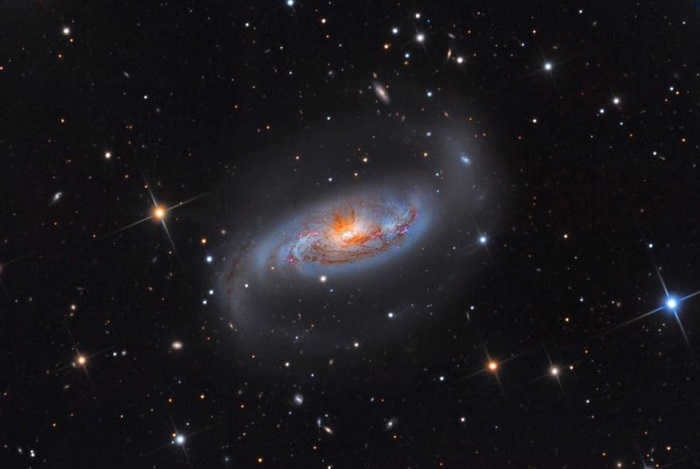
NGC 1851 (Caldwell 73) is a globular cluster that appears to have a magnitude of 7.3 and is located at a distance of 39,500 light-years. The size of the cluster is approximately 11 arcminutes.
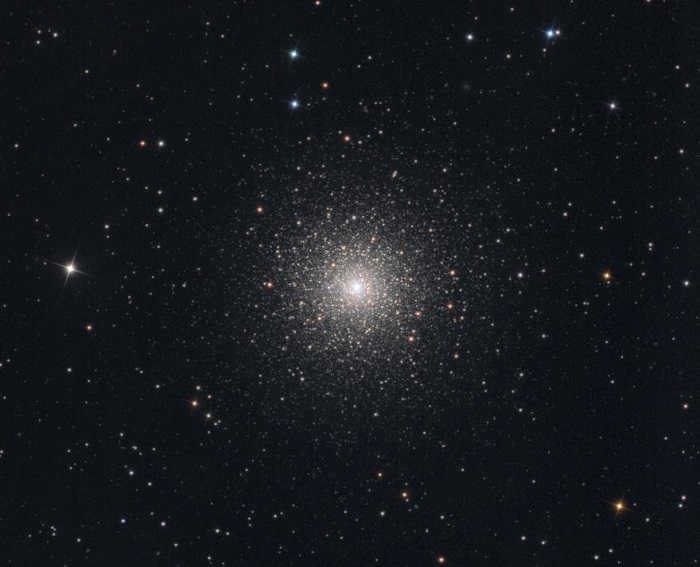
NGC 1792, discovered on October 4, 1826 by Scottish astronomer James Dunlop, is a spiral galaxy with a magnitude of 10.2. Its apparent dimensions are 5′.62 × 2′.63.
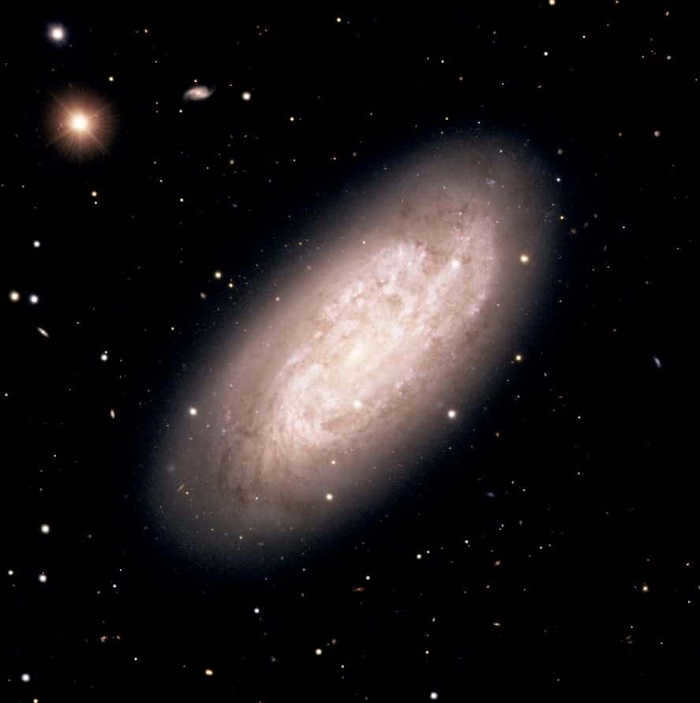
NGC 1792 displays a chaotic optical appearance as a result of the uneven distribution of dust across its disk. This galaxy is abundant in neutral hydrogen gas, which serves as fuel for the formation of new stars. Additionally, it stands out for its unusually bright emission of far-infrared light.
ESO 306-17, located 493 million light-years away, is an immense elliptical galaxy classified as cD3 (E + 3). It spans a diameter of approximately 1 million light-years, appearing as 2.5 arc seconds in size. Its apparent magnitude is 13.33.
Occupying a vast void, ESO 306-17 may have absorbed smaller galaxies in its vicinity, leading to its classification as a fossilized group or the outcome of a collision and merger between a regular group of galaxies.
If you want to explore the Dove constellation in more detail, you have the option to utilize not only our collection of photos, but also 3D models and an online telescope. Additionally, you can make use of a static or interactive star map to aid in your own personal search.
